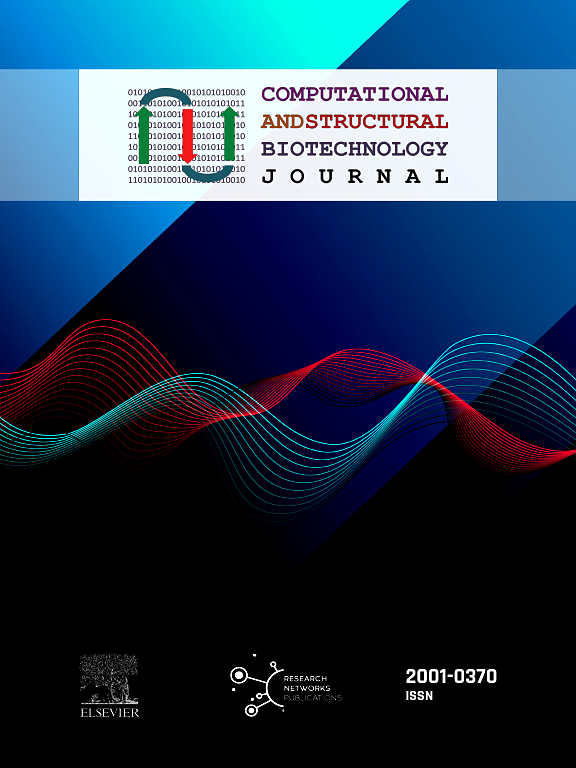Next-Generation Sequencing: a powerful multi-purpose tool in cell line development for biologics production
IF 4.4
2区 生物学
Q2 BIOCHEMISTRY & MOLECULAR BIOLOGY
Computational and structural biotechnology journal
Pub Date : 2025-04-03
DOI:10.1016/j.csbj.2025.04.006
引用次数: 0
Abstract
Within the biopharmaceutical industry, the cell line development (CLD) process generates recombinant mammalian cell lines for the expression of therapeutic proteins. Analytical methods for the extensive characterisation of the protein product are well established; however, over recent years, next-generation sequencing (NGS) technologies have rapidly become an integral part of the CLD workflow. NGS can be used for different applications to characterise the genome, epigenome and transcriptome of cell lines. The resulting extensive datasets, especially when integrated with systems biology models, can give comprehensive insights that can be applied to optimize cell lines, media, and fermentation processes. NGS also provides comprehensive methods to monitor genetic variability during CLD. High coverage NGS experiments can indeed be used to ensure the integrity of plasmids, identify integration sites, and verify monoclonality of the cell lines. This review summarises the role of NGS in advancing biopharmaceutical production to ensure safety and efficacy of therapeutic proteins.
下一代测序:一个强大的多用途的工具,在细胞系开发的生物制剂生产
在生物制药行业,细胞系发育(CLD)过程产生用于表达治疗蛋白的重组哺乳动物细胞系。广泛表征蛋白质产品的分析方法已经建立;然而,近年来,下一代测序(NGS)技术已迅速成为CLD工作流程中不可或缺的一部分。NGS可用于不同的应用,以表征细胞系的基因组、表观基因组和转录组。由此产生的广泛的数据集,特别是当与系统生物学模型集成时,可以提供全面的见解,可以应用于优化细胞系,培养基和发酵过程。NGS还提供了监测CLD期间遗传变异的综合方法。高覆盖率的NGS实验确实可以用来保证质粒的完整性,鉴定整合位点,验证细胞系的单克隆性。本文综述了NGS在促进生物制药生产以确保治疗性蛋白的安全性和有效性方面的作用。
本文章由计算机程序翻译,如有差异,请以英文原文为准。
求助全文
约1分钟内获得全文
求助全文
来源期刊

Computational and structural biotechnology journal
Biochemistry, Genetics and Molecular Biology-Biophysics
CiteScore
9.30
自引率
3.30%
发文量
540
审稿时长
6 weeks
期刊介绍:
Computational and Structural Biotechnology Journal (CSBJ) is an online gold open access journal publishing research articles and reviews after full peer review. All articles are published, without barriers to access, immediately upon acceptance. The journal places a strong emphasis on functional and mechanistic understanding of how molecular components in a biological process work together through the application of computational methods. Structural data may provide such insights, but they are not a pre-requisite for publication in the journal. Specific areas of interest include, but are not limited to:
Structure and function of proteins, nucleic acids and other macromolecules
Structure and function of multi-component complexes
Protein folding, processing and degradation
Enzymology
Computational and structural studies of plant systems
Microbial Informatics
Genomics
Proteomics
Metabolomics
Algorithms and Hypothesis in Bioinformatics
Mathematical and Theoretical Biology
Computational Chemistry and Drug Discovery
Microscopy and Molecular Imaging
Nanotechnology
Systems and Synthetic Biology
 求助内容:
求助内容: 应助结果提醒方式:
应助结果提醒方式:


